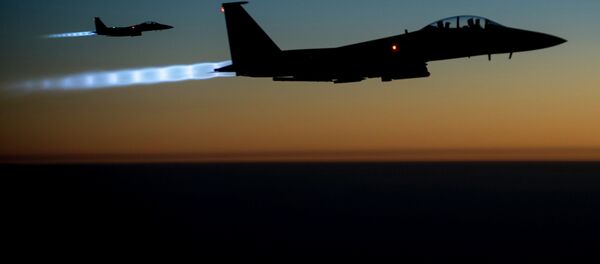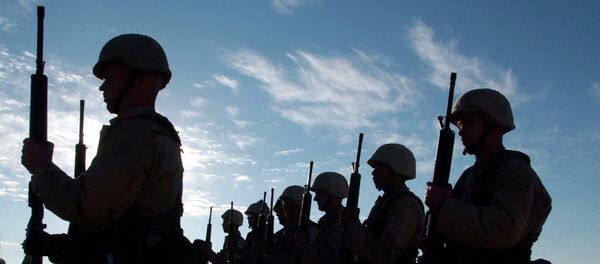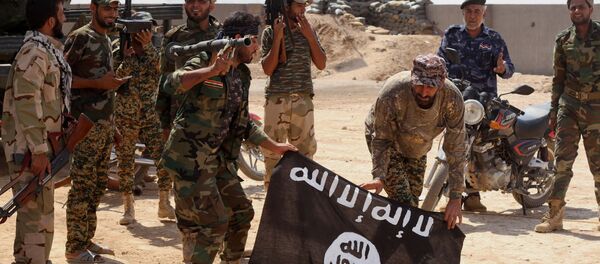MOSCOW (Sputnik) – The blast occurred near the Erawan Shrine, a popular tourist attraction, and was classified by Thai authorities as a terrorist act aimed at crippling the country’s tourism industry.
2015 Attacks
On July 17, a truck with three tons of explosives went off in a market in Bani Saad, a city in the north of Iraq, where thousands of people were gathered to celebrate the end of Ramadan, a religious holy month when all military action between Muslims is forbidden. The Islamic State group claimed responsibility for the explosion that killed 120 people.
On July 12, a suicide bomber exploded a truck killing 33 people and wounding 23 near a military base that provides accommodation for Afghan and foreign servicemen in the Afghan Province of Khost.
On the same day, several car bombs exploded in multiple areas of the Iraqi capital of Baghdad, when two suicide bombers set off explosives, one near a market. Some 35 people were killed and over a hundred wounded.
On June 17, five explosions took place near mosques and worship places of the Houthi political opposition faction in multiple areas of Yemen's capital Sanaa. ISIL claimed responsibility for the attacks that killed 31 people.
On June 2, a series of explosions in the Salahuddin Province in northern Iraq killed at least 32 members of pro-government Shiite paramilitary formations. Four car bombs were set off in the city of Baiji, injuring 34 people.
On June 1, a car bomb exploded near a military base in al-Anbar province in western Iraq, killing 38 and injuring over 30 security officers. Islamic State took responsibility for the attack.
On April 18, two explosions took place in the city of Jalalabad in the Afghan Province of Nanganhar, one outside a bank and the other near the Information and Culture Department. The attacks killed 33 people and wounded over a hundred.
On April 2, al-Shabaab militants attacked Garissa University College in northeastern Kenya, killing 147 people and injuring 79.
On March 20, militants with suicide belts entered mosques in Badr and al-Hashoosh in Yemen’s Sanaa. Four explosions were followed by attacks on Houthi checkpoints around the mosques. The terrorist acts killed 150 people and wounded at least 345. One of the Houthi spiritual leaders, Murtada Mahturi, and two high-ranking officials, were killed. Two separate explosions took place on the same day in the city of Saada, killing at least 33 people.
On January 7, at least 50 people were killed and dozens wounded in an explosion near a police college in Sanaa, Yemen. A suicide bomber detonated a mini bus stuffed with explosives when dozens of students and enrollees gathered in front of the educational institution.
2014 Attacks
On October 22, an unknown man opened fire in downtown Ottawa, Canada, killing a guard at a war memorial, and continued shooting in the parliament building next door. The attacker was blocked inside the Parliament building and shot and killed in the library. According to police, there could be several suspects.
On October 22, a home-made explosive device went off near the Engineering Department of Cairo University, injuring nine people, including five Interior Ministry officers.
On October 19, a suspected suicide bomber killed 15 outside a Shiite mosque in Baghdad.
On October 17, there were four bomb explosions in different parts of Baghdad. A suicide bomber detonated a car bomb in the central Karada area, killing 12 and wounding 24. Another suicide attacker did the same in Shiite Madinat as-Sadr area in eastern Baghdad, killing 10 and wounding 20.
On October 5, a terrorist activated an explosive belt in Grozny, Chechnya, where a City Day concert was scheduled. Spotting a suspicious young man near door-frame metal detectors installed in front of the concert hall, the police asked him to show his ID. At that moment the bomber pushed the button, killing five officers and injuring another 12 people.
On October 1, a double terrorist attack in the western Syrian city of Homs took the lives of 39 victims, including 30 schoolchildren. A car bomb was detonated outside a school in an Alawite district, Akrama, as children and parents were leaving the building. Several minutes later, a suicide bomber blew himself up at the nearby Zayim Hospital. Akrama is mostly populated by Alawite supporters of President Bashar Assad.
On September 26, at least 50 people died and 54 were wounded in a series of explosions in Bugur County, Xinjiang Uyghur Autonomous Region of China. The victims included four police officers, six passers-by and 40 suicide bombers, who exploded bombs at a food market, two police stations and a store. Some attackers were killed by the blasts, others by the police. Two terrorists were arrested.
On September 22, three bombs went off in the Xinjiang Uyghur Autonomous Region. Two people died and several were injured.
On September 4, a car bomb and a suicide bomber in Baghdad, Iraq killed at least 20 and wounded dozens of people.
On July 28, a bomb exploded near a military base in Sai Buri, Pattani Province of Thailand, when a group of soldiers was returning from a patrol. The victims were two soldiers and five civilians, including two children.
On July 25, a car bomb exploded near a hotel in Betong, Yala Province, southern Thailand, killing three and injuring over 40.
On June 9, a twin blast at the offices of Iraq’s Kurdish political party killed at least 30 people.
On May 22, three bombings in Baghdad, Iraq targeted Shiite pilgrims, killing 24.
On May 20, a home-made explosive device went off near No.30 Mursalov Street, in Makhachkala, in the Russian republic of Dagestan, injuring one man.
On March 9, at least 32 people died in a suicide bombing at a security checkpoint in Hilia, in central Iraq.
On January 15, a series of bombing attacks in the Iraqi cities of Baghdad and Baquba killed 75 people. The deadliest incident took the lives of 18 people when a bomb blew up in a funeral tent set up to mark the death of a Sunni militiaman. At least eight coordinated bombs struck Baghdad, mostly Shiite districts, killing 40.










